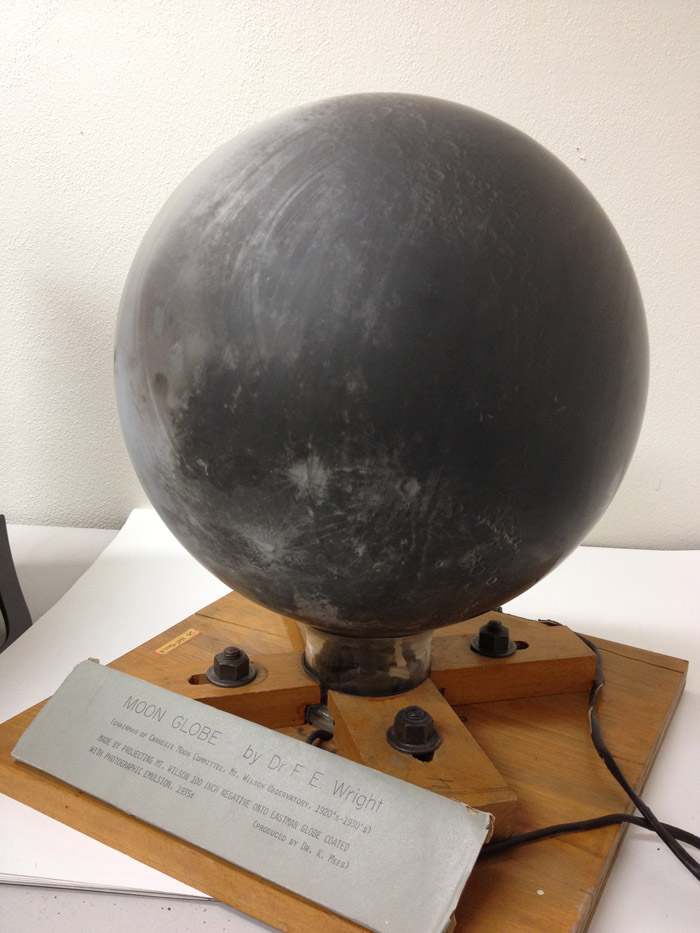December 28, 2014
An Elusive Globe

image by CAW
Originally published Aug 17, 2013.
Of all the rare and elusive documentations of the Moon, two globes stand out as almost mythical. One is the magnificent work of art that is the Russell globe of 1797. The other, even rarer I think, is the technological marvel of the Wright globes. Maria Schuchardt, data manager of the Space Imagery Center at the Lunar and Planetary Lab in Tucson allowed me to briefly examine a Wright globe. It is about 16" in diameter and rather dark - it has a light bulb inside but because the power plug for it looked compromised we did not plug it in. The sign with the globe states:
..............MOON GLOBE ......... .............................................................by Dr. F. E. Wright
..............(Chairman of the Carnegie Moon Committee. Mt. Wilson Observatory, 1920's-1930's)
..............MADE BY PROJECTING MT. WILSON 100 INCH NEGATIVE ONTO EASTMAN GLOBE COATED
..............WITH PHOTOGRAPHIC EMULSION, 1935+/- ..............................(PRODUCED BY DR. K. MEES)
The crater Copernicus is prominent in the bottom half of the globe, and the south polar region, including Tycho, is at the top. The globe displays the lunar surface reversed east to west, as if seen from inside the Moon looking out. If the original projection negative had been reversed in the projector 75 years ago the globe would display surface features in their correct relations to each other. On photographic enhancement it appears that some streaks are on the globe's surface, perhaps due to an attempt to clean it. In 1955, Alter and Roques used two different Wright globes to comment on limb features, so apparently different telescopic images were projected onto the emulsified spheres. Alter was Director of the Griffith Observatory outside of Los Angles so those Wright Globes may still be in the collection there. Despite existing for 10-15 years, and including some notable scientists, the Carnegie Moon Committee produced very little that increased the scientific understanding of the Moon. If they had looked carefully at their globes they might have discovered multi-ring impact basins decades earlier than Baldwin, Hartmann and Kuiper ultimately did. A crater was named for Wright by Percy Wilkins of the British Astronomical Association, but the IAU did not accept that location and later gave Wright's name to a feature inside the Orientale Basin, which Wright missed his chance to discover.
Chuck Wood
Yesterday's LPOD: Sculpted Floor
Tomorrow's LPOD: The Fonz of Craters
COMMENTS?
Register, Log in, and join in the comments.



